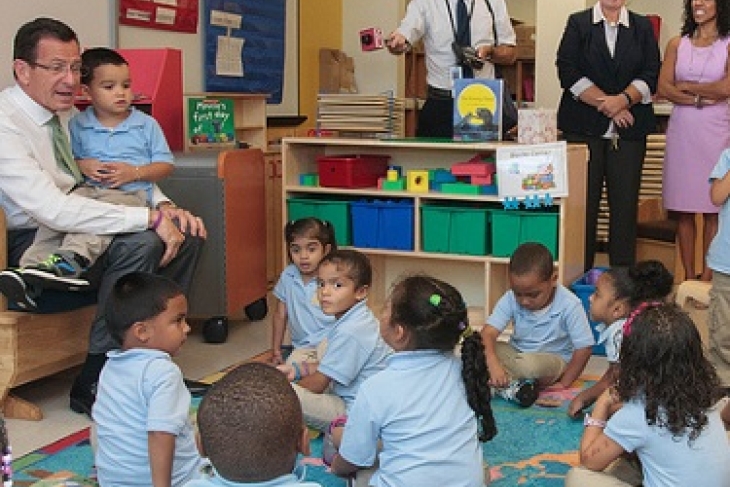Last week, the Thomas B. Fordham Institute released a new report authored by my colleague Ashley LiBetti Mitchel and me on charter schools and pre-K. Ashley’s going to be sharing more about the report later today, but I wanted to answer some questions that came up a lot in our research: Why should charter schools be able to offer pre-K? And why should we care? There are several reasons:
- Supply. Even if universal pre-K (or even universal pre-K for poor kids) were fully funded today, we wouldn’t have enough high-quality providers to serve all kids. The challenges that New York City is facing as it expands access offer a case in point here. Getting great pre-K to all the kids who need it will require growing the supply of great providers. Charter schools are one potential source of this supply.
- Diversity. Both the charter movement and most state pre-K programs recognize that there is value in a diversity of providers that can offer different models and services to meet the needs of kids and families. In K–12, the charter sector has helped make new types of options, such as Montessori, Core Knowledge, or Dual Language schools, available to families who value them. Including charter schools in pre-K programs can help further expand the range of accessible options for families in preschool as well.
- Evolution. A growing number of cities around the country are moving away from district monopolies on K–12 schooling and toward their own diverse delivery or portfolio models that incorporate a range of district-run and charter schools. As more cities move in this direction, it is important for pre-K policies to recognize that districts are no longer the dominant or sole provider of public education and to incorporate charters alongside districts and community-based provider options.
- Innovation. Where charter schools are allowed to offer pre-K, as in Washington, D.C., the increased autonomy the charter model provides has created space for innovation and the development of new models. But solving the major challenges of scaling quality in early childhood programs will require further innovation, particularly around human capital, curriculum, assessment, and leadership. Growing the number of excellent pre-K charter schools can help foster that innovation.
- Maximizing impact for at-risk kids. Both charter schools and pre-K have shown the greatest impact in improving outcomes for historically underserved and at-risk children. But closing the achievement gap is hard work. Combining high-quality pre-K with high-performing charter schools offers greater potential to close the achievement gaps for low-income kids than either intervention does on its own.
None of this means that charters inherently do a better job of serving preschoolers than district schools or established community-based providers. Ashley and I certainly don’t think that. There are amazing pre-K programs in community-based settings and district-run schools, and there are lots of charters that have no idea what to do with a four-year-old. Rather, our point is this: Given that pre-K has already been established as a diverse delivery system that includes both public schools and community-based programs, charter schools should be able to participate in that system on the same grounds as these other types of providers.
Sara Mead is a principal at Bellwether Education Partners. This piece was originally posted in a slightly different form on Bellwether’s Ahead of the Heard.

